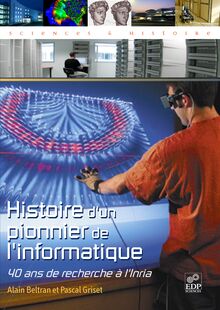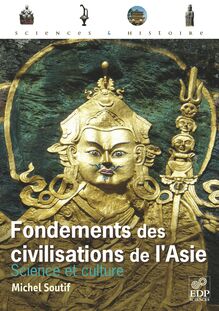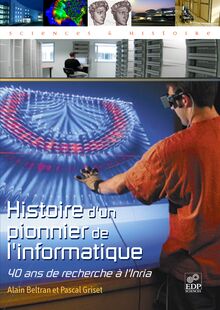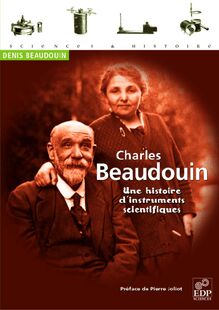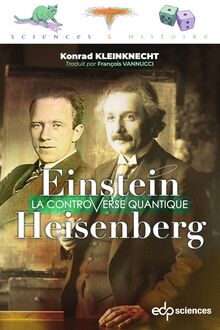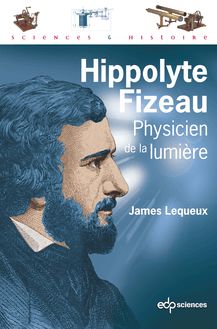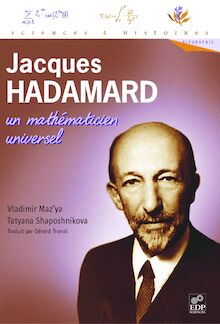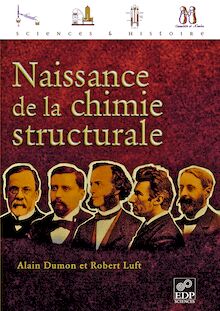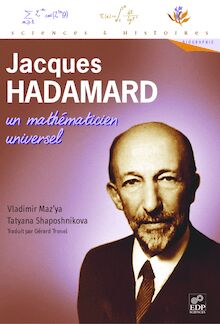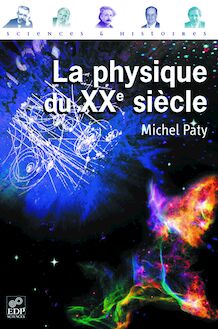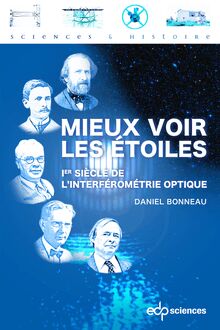-
 Univers
Univers
-
 Ebooks
Ebooks
-
 Livres audio
Livres audio
-
 Presse
Presse
-
 Podcasts
Podcasts
-
 BD
BD
-
 Documents
Documents
-
- Cours
- Révisions
- Ressources pédagogiques
- Sciences de l’éducation
- Manuels scolaires
- Langues
- Travaux de classe
- Annales de BEP
- Etudes supérieures
- Maternelle et primaire
- Fiches de lecture
- Orientation scolaire
- Méthodologie
- Corrigés de devoir
- Annales d’examens et concours
- Annales du bac
- Annales du brevet
- Rapports de stage
La lecture à portée de main
Découvre YouScribe en t'inscrivant gratuitement
Je m'inscrisGaston Contremoulins, 1869 - 1950 , livre ebook
EDP Sciences
-
Patrick Mornet
traduit par
Cole A. Giller
Découvre YouScribe en t'inscrivant gratuitement
Je m'inscrisEn savoir plus
En savoir plus

Description
How could a self-taught scholar of the calibre of Gaston Contremoulins be forgotten?
Driven by his fascination with photography and the discovery of X-rays by Roentgen in 1897, he was the first to invent a device capable of locating intracranial foreign bodies. He thus anticipated the development of stereotaxis, so crucial to modern medicine half a century later. He was recognized and appointed director of the main radiology department of Necker Hospital in Paris. Yet he was not a doctor!
His design of a complete radiological technology for three-dimensional visualization was a work of genius, foreshadowing the principles of the CT scanner. His interest in orthopedic problems led him to develop sophisticated uses of radiographic images to manufacture prostheses and fusion instruments, thus founding a field he called «radiosurgery». He was a pioneer in radiation protection measures, fighting the widespread and erroneous belief that X-rays were harmless!
Although he was vigorously defended by the Academy of Science and the great surgeons of the Paris Hospital, his enemies managed to erase his name and work from the historical archives.
This work by Patrick Mornet places Contremoulins in his rightful position in the history of radiology: at the front!
Sujets
Informations
| Publié par | EDP Sciences |
| Date de parution | 18 mars 2019 |
| Nombre de lectures | 0 |
| EAN13 | 9782759830343 |
| Langue | English |
| Poids de l'ouvrage | 8 Mo |
Informations légales : prix de location à la page 0,2900€. Cette information est donnée uniquement à titre indicatif conformément à la législation en vigueur.
Extrait
Patrick Mornet
Gaston Contremoulins, 1869 - 1950
Visionary Pioneer of Radiology - Forgotten heritage
Copyright
© EDP Sciences, Les Ulis, 2019
ISBN papier : 9782759822294 ISBN numérique : 9782759830343
Composition numérique : 2023
http://publications.edpsciences.org/
Cette uvre est protégée par le droit d auteur et strictement réservée à l usage privé du client. Toute reproduction ou diffusion au profit de tiers, à titre gratuit ou onéreux, de tout ou partie de cette uvre est strictement interdite et constitue une contrefaçon prévue par les articles L 335-2 et suivants du Code de la propriété intellectuelle. L éditeur se réserve le droit de poursuivre toute atteinte à ses droits de propriété intellectuelle devant les juridictions civiles ou pénales.
Présentation
How could a self-taught scholar of the calibre of Gaston Contremoulins be forgotten ? Driven by his fascination with photography and the discovery of X-rays by Roentgen in 1897, he was the first to invent a device capable of locating intracranial foreign bodies. He thus anticipated the development of stereotaxis, so crucial to modern medicine half a century later. He was recognized and appointed director of the main radiology department of Necker Hospital in Paris. Yet he was not a doctor ! His design of a complete radiological technology for three-dimensional visualization was a work of genius, foreshadowing the principles of the CT scanner. His interest in orthopedic problems led him to develop sophisticated uses of radiographic images to manufacture prostheses and fusion instruments, thus founding a field he called « radiosurgery ». He was a pioneer in radiation protection measures, fighting the widespread and erroneous belief that X-rays were harmless ! Although he was vigorously defended by the Academy of Science and the great surgeons of the Paris Hospital, his enemies managed to erase his name and work from the historical archives. This work by Patrick Mornet places Contremoulins in his rightful position in the history of radiology : at the front !
L'auteur
Patrick Mornet
Doctor Patrick Mornet is intern of Hospital of Paris and former chief of internal medicine at the Hospital Center of Saint-Germain-en-Laye. His study is based on the personal archives of Contremoulins, his numerous publications in the “Académie des sciences” and in the “Académie Nationale de Médecine” of Paris, as well as on the testimony of close acquintances of the great man.
Table des matières Translator s Preface (Cole A.GillerMD PhD. MBA) Second Preface (ProfessorJean-FrancoisMoreau) Introduction Chapter I. Learning Chapter II. The Adventure of X-rays Chapter III. The Metroradiography Service at Necker Hospital Chapter IV. The Quarrel: Doctors vs. Non-Doctors Chapter V. Radiosurgery I. The Use of Radiosurgery to Extract Foreign Bodies II. Radiosurgery for Orthopedic Osteosyntheses and Prostheses Chapter VI. Radiation Protection Chapter VII. Contremoulins and Money Chapter VIII. Saint-Germain-en-Laye Conclusion Epilogue Acknowledgements Bibliography
Translator s Preface
Cole A. Giller MD PhD. MBA
Director, Functional and Stereotactic Neurosurgery, Department of Neurosurgery, Augusta University, Augusta, Georgia (U.S.A.)
C ountless stories have been told and then forgotten over the course of history, but only a small fraction are resurrected later to be given a chance to be heard again. Stories that persist usually do because they impart singular insights into human nature, or because they illuminate historical perspective, or reveal long buried secrets. This book by Dr. Patrick Mornet, on the life and work of Gaston Contremoulins is a tapestry of such stories, forgotten for almost a century, and only recently rediscovered by chance. Included is the story of a young artist without medical training who rode the tsunami of scientific energy flowing through Paris in the late nineteenth century to become one of the most celebrated and innovative radiograhers of the time. There is also the story of how he was the first to invent the stereotactic method - now a cornerstone of modern medecine - and how it is widely but erroneously believed that the first development of stereotaxis did not occur until 50 years later. And there is the secret story of how a bitter struggle between physicians and non-physicians for control of the then nascent field of radiology led to a seemingly deliberate attempt to cast his name and contributions into obscurity.
These story teach valuable lessons: that scientific ideas can be forgotten and remembered according to the needs of the time, and that innocent genius can fall victim to political battles. The radiologist Jean-François Moreau recognized their importance when he discovered them in the 1980 s, writing a series of articles to return the story to public memory. He was joined in this effort by Dr. Mornet, who authored several articles regarding Contremoulins as well as an authoritative biography, derived from hard-to-find primary and secondary sources. His book was written in French, and the majority of the information about Contremoulins remained in the French historical literature.
It is therefore a great honor to be asked to translate Dr. Mornet s book into English, and to help ensure its availability to a worldwide audience.
Because I do not speak fluent French, my selection as translator must seem odd at best. But two things made this translation possible and, I hope, credible. The first is my familarity with stereotaxis and its technology from years of experience as a stereotactic neurosurgeon. The second is the availability of translation sofware, even though the English text produced from the French prose is often gibberish, similar to the dysphasic speech following a brain injury. Fortunately, all neurosurgeons are skilled at understanding dysphasic patients, and so I was thus able to discern meaning from the automatic translations. Nevertheless, I am sure that I have misinterpreted some of Dr. Mornet s writing and missed some cultural references, and for that I apologize.
Some of the names for streets and places are left in French, but placed in italics to preserve the sense of the reference. I have also included notes to explain terms that may not be familiar to all readers.
I want to express my heartfelt thanks to Dr. Patrick Mornet and Dr. Jean-François Moreau for their encouragement and help through this project, and for inspiring my interest in Contremoulins and his remarkable story.
Second Preface
Professor Jean-Francois Moreau
A.I.H.O. 1965 F.A.C.R. Professor Emeritus, University Paris Descartes, PRES Sorbonne Paris Cité. Honorary Electroradiologist, Necker hospital.
Academy President and Founder of Science and Medical Imaging Technologies (ASTIM) Co-founder of the International Society of History of Radiology, Vienna, Auricle, March 5, 2011.
Past-president of the Association of Friends of the Museum of the AP-HP.
I n this book, Dr. Patrick Mornet offers the extraordinarily rich history of the widely acknowledged father of radiography [1] , a father widely accepted by French radiology, but also rejected even though he founded the Necker hospital in Paris in 1898.
Our colleague Mornet did not personally know Contremoulins, but has studied him with such intensity and interest that he has become, almost by osmosis, the depositary of Contremoulins memory. He thereby honors what he believes to be a duty of memory - and this is all to his credit - based on the history of this great man bequeathed to him by one of his patients.
When I was appointed head of the Radiology Department of Necker in 1988, I discovered the identity of its founder, Gaston Contremoulins, while studying the history of the service.
Thereafter I became the historian of radiology at Necker Hospital, where I had served as an extern in 1962, an intern in 1968, then as clinical director certified by Prof. Rene Michel, the new chief of the radiology service within the Palais du Rein from October of 1968 to October of 1982. It is therefore astonishing that I never heard the name of Contremoulins, nor read anything about him.
Even more astonishing is that when I worked with Antoinette [1] , the formidable and famous daughter of Prof. Antoine Béclère, from 1967 until her death, she never mentioned her father s main enemy .
Guy Pallardy [2] was chief of radiology at Cochin hospital when I was an intern, and later became president of the Société Française d Histoire de la Médecine (SFHM). He wrote L histoire Illustrée de la Radiologie in which he paid a respectful, yet very modest tribute to the pioneering role of Contremoulins.
Is Memory the child of Chance and Necessity? I believe so.
The work of Jacques Monod [3] is one of the bibles of philosophical bioscience. But there are still many mysteries to ponder about the essential role played by chance encounters between strangers, working along the same lines, to the course of their common project. How could it be that the two contemporaries, Jean-Francois Moreau and Patrick Mornet, never heard of one another until the day they met in Beaune for the Days of Friends of the Marey Museum joined by the friends of the museum AP-HP (ADAMAP) on November 22, 2009.
This book would never have been finished so quickly and surely without this encounter.
And what about Chance? Yes, from Chance came the collaboration in 1896 between an artist of chronophotography working in the physiology workshop of Marey, and a histological surgeon of l Hopital de Charité, Dr Remy, just as Rontgen announced the discovery of X-rays and described his work as a photographic process.
And Necessity? Yes, it was a necessity to protect humans against the harmful effects of X-rays. This issue was too long ignored by the pioneers such as Béclère and his associates, but given lucid and prescient attention by Contremoulins. He testified with a power and knowledge far beyond medical radiology. But because
-
 Univers
Univers
-
 Ebooks
Ebooks
-
 Livres audio
Livres audio
-
 Presse
Presse
-
 Podcasts
Podcasts
-
 BD
BD
-
 Documents
Documents
-
Jeunesse
-
Littérature
-
Ressources professionnelles
-
Santé et bien-être
-
Savoirs
-
Education
-
Loisirs et hobbies
-
Art, musique et cinéma
-
Actualité et débat de société
-
Jeunesse
-
Littérature
-
Ressources professionnelles
-
Santé et bien-être
-
Savoirs
-
Education
-
Loisirs et hobbies
-
Art, musique et cinéma
-
Actualité et débat de société
-
Actualités
-
Lifestyle
-
Presse jeunesse
-
Presse professionnelle
-
Pratique
-
Presse sportive
-
Presse internationale
-
Culture & Médias
-
Action et Aventures
-
Science-fiction et Fantasy
-
Société
-
Jeunesse
-
Littérature
-
Ressources professionnelles
-
Santé et bien-être
-
Savoirs
-
Education
-
Loisirs et hobbies
-
Art, musique et cinéma
-
Actualité et débat de société
- Cours
- Révisions
- Ressources pédagogiques
- Sciences de l’éducation
- Manuels scolaires
- Langues
- Travaux de classe
- Annales de BEP
- Etudes supérieures
- Maternelle et primaire
- Fiches de lecture
- Orientation scolaire
- Méthodologie
- Corrigés de devoir
- Annales d’examens et concours
- Annales du bac
- Annales du brevet
- Rapports de stage
